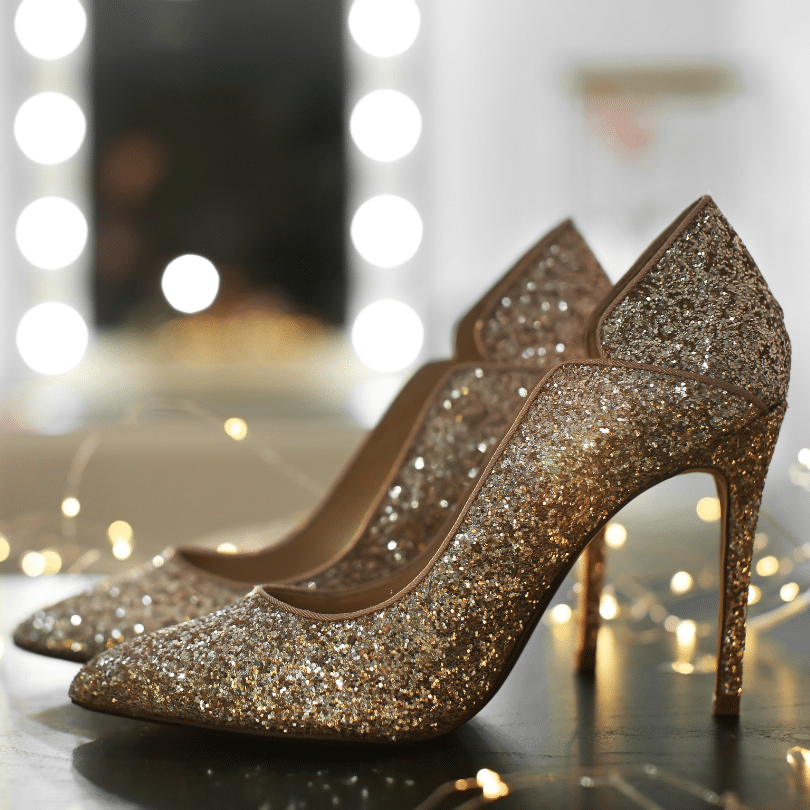When it comes to shoes, comfort and performance go hand-in-hand. Possibly the most important component of a dancer’s outfit, the type of shoe and heel you choose is crucial. We’ve compiled a list of heels that suit different needs and dancer preferences.
 Traditional Heel
Traditional Heel
The traditional dancing heel, known as the “Oxford” or the “Gibson,” is a classic for a reason. With a flat base, suede bottom and a slightly slanted and rounded top, this shoe is stable and durable. However, it trades comfort for durability – you may find yourself getting sore from heavy use.
Rounded Heel
Many ballroom dancers choose the rounded heel shoe for easier movement. This is the perfect heel for dancers who incorporate lots of dynamic movement into their dancing, allowing for higher mobility with a smaller chance of sliding out of control on the parquet. The lifted sole (as opposed to the flatter sole of the traditional heel) allows for a greater amount of control during high-movement dances.
Slanted Heel
Like the rounded heel, the slanted heel has an inclined back to make for easier movement. Instead of a rounded heel, however, it slants with the rest of the shoe. This heel is a great middle ground for dancers who are looking for the freedom of movement of the rounded heel while preserving the sturdiness and look of the traditional heel.
Cushioned Heel
If you’re looking for maximum comfort, then the cushioned heel is the choice for you. Featuring soft rubber between the suede base and the heel, this heel forefronts comfort above all else. It’s also noiseless on account of the cushioning. This heel may feel less stable than other heels for some dancers, but if comfort is your biggest priority, the cushioned heel is the one for you. Beware, though – the soft layer that makes the cushioned heel comfortable wears off quickly.
While this guide may be helpful for understanding what heel suits your dance style, it’s always encouraged to try them for yourself and find what suits you best. Happy dancing!
